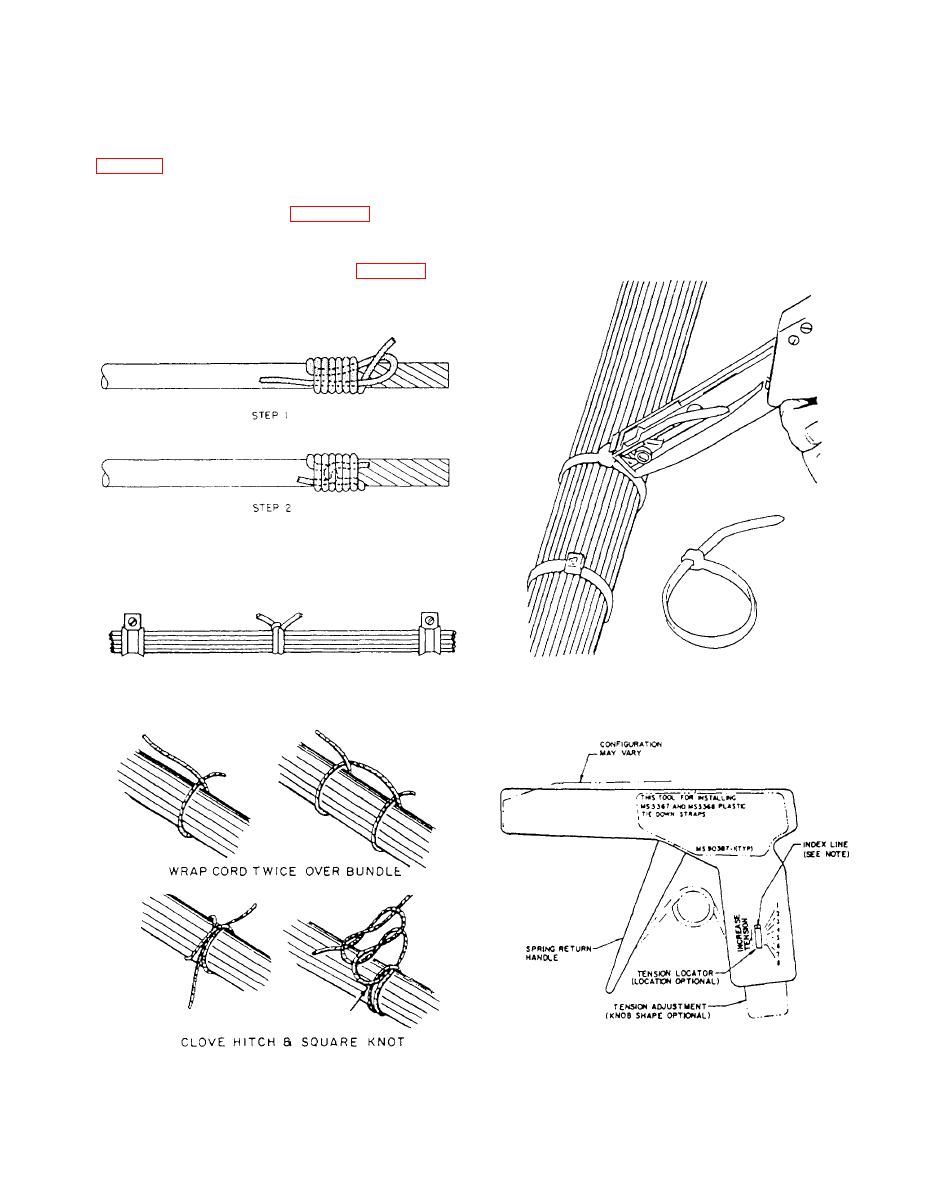 |
|||
|
Page Title:
Figure 2-62.-Serving conductor ends. |
|
||
| ||||||||||
|
|
 with an extra loop is used. The free ends of the cord
separately. When groups parallel each other, they
should be bound together at intervals with telephone
are then trimmed to a minimum of three-eighths of an
hitches.
inch.
Conductor ends (3000 cm or larger) should be
SELF-CLINCHING CABLE STRAPS.-- Self-
served with cord to prevent fraying of the insulation
clinching cable straps are adjustable, lightweight, flat
nylon straps. They have molded ribs or serrations on
the inside surface to grip the wire. They may be used
instead of individual cord ties for securing wire groups
in equipment, as illustrated in figure 2-63, spot ties are
or bundles quickly. The straps are of two types: a plain
used to secure the conductor groups if the supports are
more than 12 inches apart. The spot ties are made by
wrapping the cord around the group (fig. 2-64). To
finish the tie, a clove hitch followed by a square knot
straps.
2-52
|
|
Privacy Statement - Press Release - Copyright Information. - Contact Us |